The Nordic region encompasses a constellation of vibrant cities where innovative urban planning meets centuries of cultural heritage. From coastal capitals to Arctic outposts, these northern European urban centers offer distinct personalities shaped by geography, history, and the unique Nordic approach to social development and design.
Beyond the familiar capitals, lesser-known Nordic cities reveal unexpected charms and distinctive local characters that reward travelers willing to explore beyond the usual tourist circuit.
Here is a list of 14 remarkable Nordic cities that deserve at least one visit during a lifetime of meaningful travel experiences.
Copenhagen, Denmark

Denmark’s capital exemplifies the renowned Danish concept of “hygge” through its intimate scale and human-centered urban design that prioritizes pedestrian experiences over vehicular traffic. The harbor’s clean swimming areas demonstrate the city’s environmental commitment, allowing summer visitors to dive directly into the heart of the city from designated platforms surrounded by urban architecture.
Historic Nyhavn’s colorful 17th-century harbor buildings contrast with the modern angles of the Royal Danish Opera House across the water, showcasing Copenhagen’s harmonious blend of old and new. The Torvehallerne food markets reveal Copenhagen’s culinary renaissance, housing everything from traditional smørrebrød to innovative New Nordic cuisine, pioneers transforming simple local ingredients into world-class gastronomy.
Stockholm, Sweden

Built across 14 islands connected by 57 bridges, Stockholm combines architectural grandeur with abundant green spaces and shimmering waterways. The medieval core of Gamla Stan features narrow cobblestone streets winding between ochre-colored buildings housing hidden courtyards, specialty shops, and traditional Swedish restaurants serving seasonal specialties.
Stockholm’s subway system doubles as the world’s longest art gallery, with over 90 stations transformed through mosaics, installations, and paintings created by different artists since the 1950s. The city’s unique commitment to transparency manifests in the Odenplan library, where floor-to-ceiling windows allow passersby to observe readers inside while simultaneously allowing readers to feel connected to the city’s daily rhythms.
Like Travel Pug’s content? Follow us on MSN.
Bergen, Norway

Nestled between seven mountains and facing the fjord-carved coastline, Bergen maintains Norway’s most photogenic cityscape through its UNESCO-listed Bryggen Wharf district, featuring colorful wooden buildings dating back to the 14th century. The Fløibanen funicular climbs to panoramic viewpoints, revealing how the city occupies a narrow strip between mountains and sea, explaining its linear development pattern, unlike circular European cities.
Bergen receives over 80 inches of annual rainfall, creating a lush surrounding landscape and contributing to the city’s remarkable musical culture – the frequent indoor days historically encouraged pursuits like classical music, with Bergen now hosting one of Europe’s oldest symphony orchestras. The fish market has operated continuously since the 1200s, offering visitors the opportunity to taste seafood prepared using traditions developed across nearly a millennium.
Helsinki, Finland
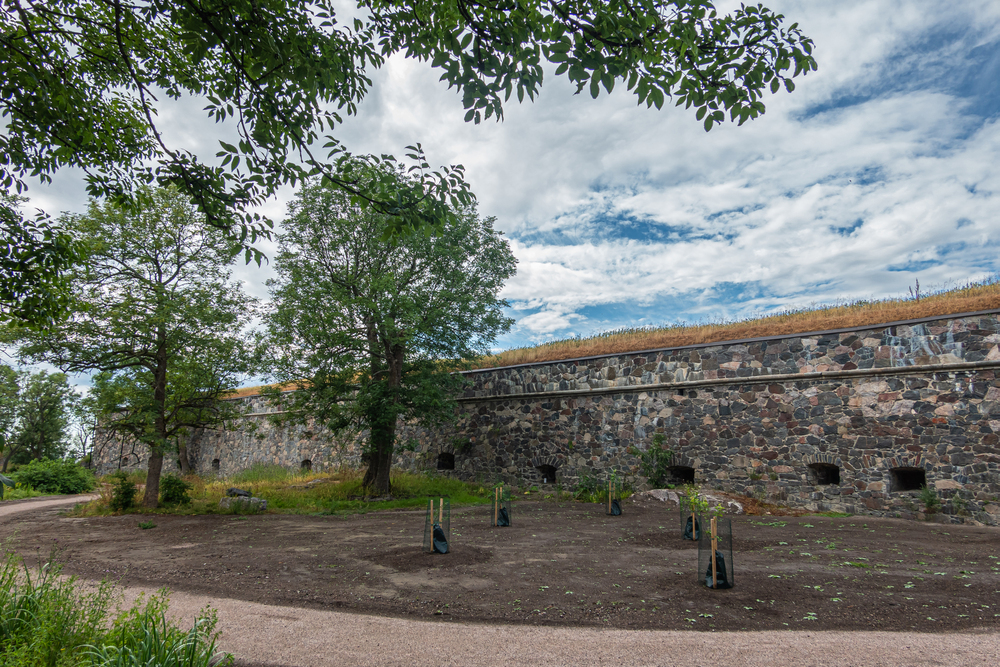
The Finnish capital demonstrates exceptional architectural diversity through its structures spanning Russian Imperial grandeur, Nordic Classicism, and cutting-edge contemporary design, often utilizing native wood in innovative applications. Helsinki’s distinctive restaurant scene embraces foraged ingredients like wild mushrooms, berries, and herbs gathered from nearby forests that circle the city and sometimes extend into neighborhoods through protected green corridors.
The city’s relationship with light becomes apparent through seasonal contrasts – summer brings nearly round-the-clock brightness reflected across Helsinki’s many water bodies, while winter’s limited daylight inspires creative illumination strategies from glowing public art to lantern-lined park paths. Unusual landmarks include the Temppeliaukio Church, carved directly into solid bedrock, and the Sibelius Monument, comprising 600 steel pipes arranged to create music when the ocean breeze passes through them.
Reykjavik, Iceland

Despite its modest population of 135,000, Iceland’s capital packs remarkable cultural richness into its compact downtown, spreading from the distinctive Hallgrímskirkja church, whose modernist concrete design evokes natural basalt formations found throughout the Icelandic landscape. Geothermal energy heats nearly every building in Reykjavik through an elaborate underground hot water network, with excess warmth creating snow-free sidewalks and streets even during heavy winter storms.
The city’s vibrant creative culture supports roughly 100 different music venues despite its small size, with weekend evenings featuring diverse performances from traditional Icelandic folk music to cutting-edge electronic experimentation. Reykjavik’s harbor area combines commercial fishing operations with whale-watching departures and innovative seafood restaurants where chefs create modern interpretations of traditional preservation techniques developed through Iceland’s long isolation.
Like Travel Pug’s content? Follow us on MSN.
Aarhus, Denmark
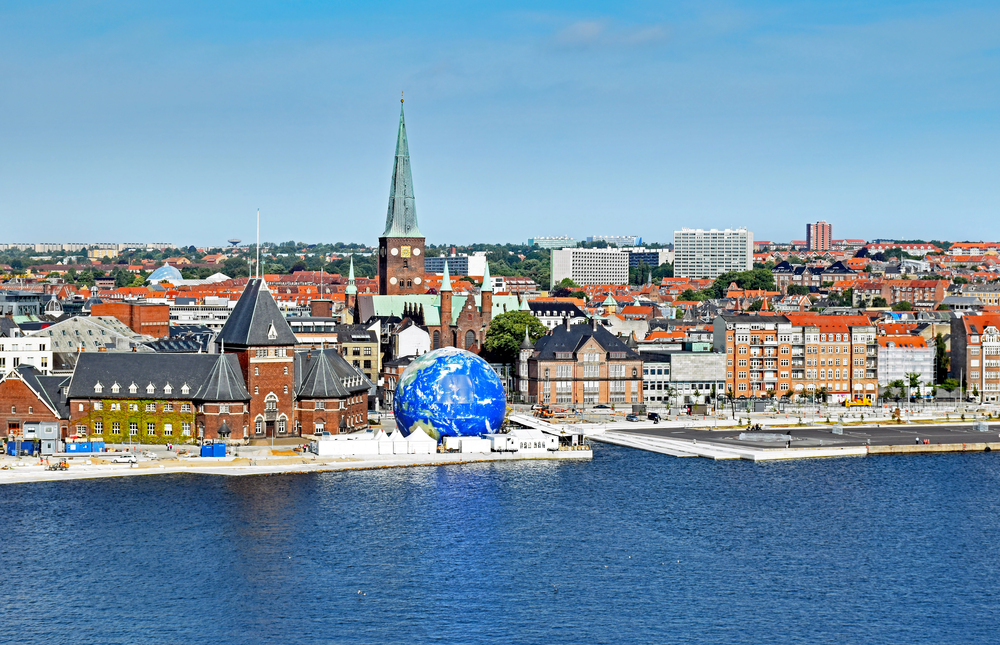
Denmark’s second city balances historic charm with forward-thinking urban development, particularly evident in its transformed harbor district featuring the iconic Iceberg apartment complex, whose jagged white peaks mimic floating ice. The open-air Old Town Museum preserves 75 historic buildings relocated from throughout Denmark, creating a living museum where costumed interpreters demonstrate traditional crafts and domestic activities across different historical periods.
Aarhus University’s distinctive yellow-brick buildings integrate seamlessly with the surrounding parkland, creating an academic atmosphere that spills into the city’s abundant cafés filled with students during term time. The ARoS art museum’s circular rainbow panorama walkway creates a distinctive rooftop silhouette while allowing visitors to view the city through every color of the spectrum, changing ordinary urban scenes into extraordinary artistic perspectives.
Gothenburg, Sweden

Sweden’s second-largest city embraces its working-class roots while developing a distinctive cultural identity through its thriving music scene, innovative restaurant culture, and repurposed industrial spaces. The extensive archipelago extending from Gothenburg’s harbor provides an extraordinary urban amenity – over 20 islands accessible by public ferry, where residents maintain summer cottages and visitors discover car-free environments mere minutes from downtown.
Historic Haga district features traditional wooden houses and stone-paved streets now housing cozy cafés serving kanelbullar cinnamon rolls famously larger than those found elsewhere in Sweden. The city’s shipbuilding heritage manifests in the floating museum Maritiman, where visitors can explore vessels ranging from military destroyers to civilian cargo ships while learning about Gothenburg’s historical connection to global trade routes.
Trondheim, Norway

Norway’s historic capital showcases extraordinary medieval heritage through its towering Nidaros Cathedral, featuring intricate stone carvings depicting biblical scenes and Norse mythology side by side. The distinctive multicolored warehouses along the Nidelva River create the city’s most photographed streetscape, with these former commercial buildings now housing boutiques, galleries, and cafés catering to university students and visitors alike.
Trondheim’s position as a knowledge hub manifests through the Norwegian University of Science and Technology and numerous research institutions focused on renewable energy, creating a youthful atmosphere despite the city’s ancient roots.
The Rockheim National Museum of Popular Music celebrates Norway’s surprisingly influential role in global music development, particularly within metal, electronica, and jazz genres often associated with other countries.
Like Travel Pug’s content? Follow us on MSN.
Turku, Finland

Finland’s oldest city and former capital maintains Medieval roots while evolving into a vibrant university center where historic squares host summer festivals showcasing Finnish cultural traditions alongside contemporary arts. The Aura River flowing through downtown features pedestrian-friendly banks lined with converted factory buildings now housing creative studios, breweries, and waterfront restaurants serving locally sourced Finnish specialties.
Turku Castle stands as Finland’s largest surviving medieval building, with its massive stone walls housing exhibitions detailing the region’s complex history through Swedish, Russian, and independent Finnish periods.
The city’s architectural contrasts become apparent through Alvar Aalto’s distinctively modernist library standing near the 13th-century cathedral, representing Finland’s remarkable journey from a medieval outpost to a design-forward nation.
Aalborg, Denmark

This northern Jutland city successfully transformed from an industrial center to a cultural destination through the ambitious redevelopment of its waterfront, where former factory buildings now house university facilities, cultural institutions, and public recreational spaces. Aalborg’s compact size allows visitors to easily experience its diverse architectural periods, from half-timbered Renaissance merchant houses to the ultra-modern House of Music, whose undulating white exterior resembles breaking waves.
The city’s surrounding landscape features dramatic shifting dunes and spectacular natural light conditions that have attracted an artists’ colony since the 19th century, with many studios open to visitors in the nearby coastal community of Skagen.
Innovative gastronomy flourishes in Aalborg through restaurants utilizing North Jutland’s exceptional seafood, game, and foraged ingredients prepared with techniques balancing traditional preservation methods with contemporary presentation.
Tampere, Finland
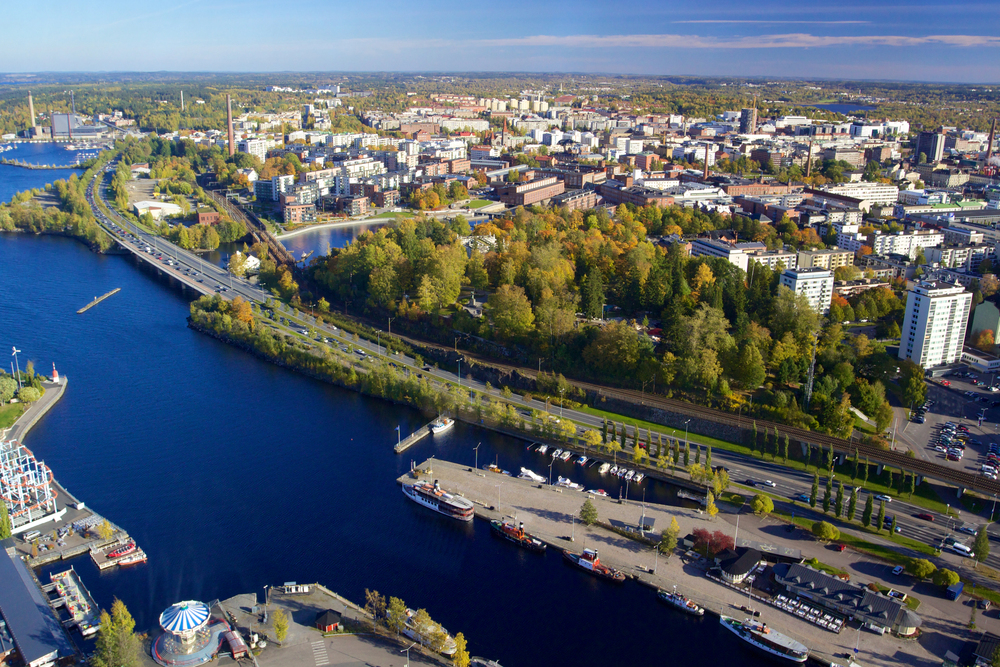
Finland’s largest inland city occupies a dramatic isthmus between two major lakes, with powerful rapids flowing through the city center that once powered textile factories now converted to cultural venues, boutique hotels, and creative workspaces. The city’s industrial heritage remains visible through preserved red-brick factory buildings, while newer additions like the distinctive Moomin Museum – dedicated to Finland’s beloved cartoon characters – represent its cultural evolution. Located just two hours from Helsinki, Tampere offers significantly lower prices for accommodations and dining while maintaining excellent transportation connections to Finland’s expansive lake district.
The city’s sauna culture reaches its peak at Rajaportti, Finland’s oldest public sauna still in operation, where traditional wood-fired heating and minimalist facilities preserve the authentic Finnish sauna experience with separate facilities for men and women.
Like Travel Pug’s content? Follow us on MSN.
Malmö, Sweden
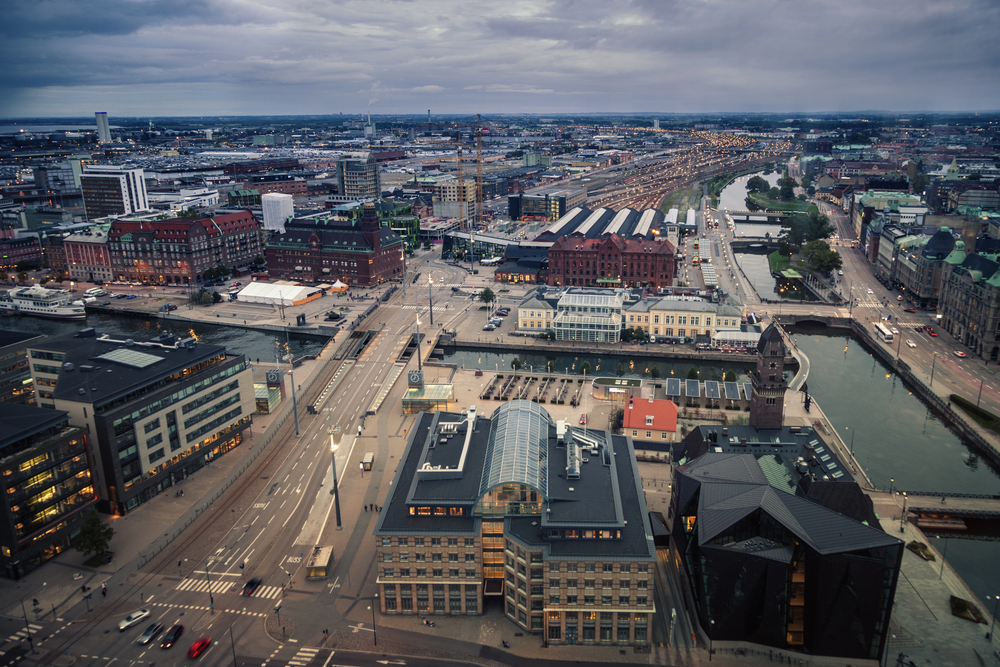
Connected to Copenhagen by the engineering marvel of the Øresund Bridge, Malmö has transformed from an industrial center to a multicultural hub while pioneering sustainable urban development. The landmark Turning Torso residential skyscraper creates a distinctive skyline while exemplifying energy-efficient design principles through its twisted form, capturing optimal sunlight.
The city’s Western Harbor district stands as Europe’s first carbon-neutral neighborhood, featuring innovative architectural solutions, including green roofs, solar panels, and rainwater collection systems integrated into buildings rather than added as afterthoughts. Malmö’s diverse population – with residents from over 170 countries – has created a dynamic food scene where traditional Swedish cuisine appears alongside authentic restaurants representing culinary traditions from around the world. The city’s historic center retains medieval elements while incorporating pedestrian-friendly streets and squares where locals gather regardless of weather conditions.
Stavanger, Norway
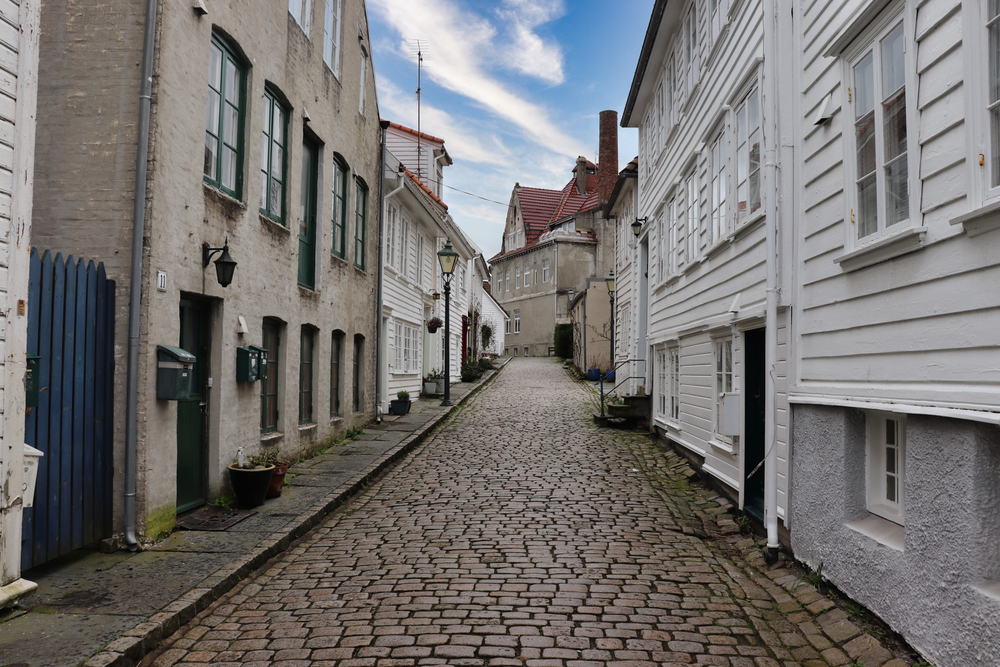
Norway’s petroleum capital balances its energy industry role with careful preservation of its historic core, featuring Europe’s largest collection of wooden buildings dating primarily from the 18th and 19th centuries. The surrounding fjord landscape provides dramatic natural backdrops visible from many city streets, with nearby Pulpit Rock offering one of Norway’s most iconic hiking experiences just an hour from downtown.
The Norwegian Petroleum Museum creatively explains the industry’s technical aspects while honestly addressing environmental challenges, housed in a building resembling an offshore platform. Stavanger’s cultural renaissance includes the annual Nuart Festival, transforming blank walls into massive artistic statements through commissioned work from international street artists and creating an evolving open-air gallery throughout the city center.
Espoo, Finland
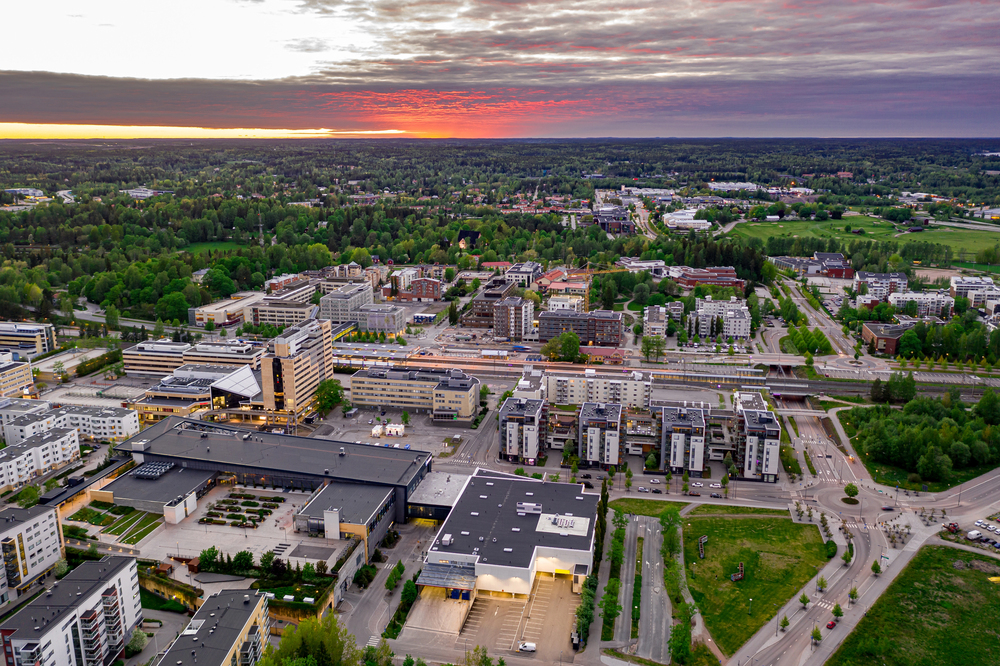
Though technically Finland’s second-largest city, Espoo defies traditional urban forms through its unique garden city concept spanning five distinct regional centers connected by efficient public transportation rather than a single downtown core. The Aalto University campus showcases Finnish architectural innovation through buildings designed by renowned architects, including the university’s namesake, Alvar Aalto, creating spaces specifically engineered to encourage cross-disciplinary collaboration.
The WeeGee Exhibition Centre houses four museums within a former printing facility, exemplifying Finnish adaptive reuse principles that preserve industrial heritage while creating contemporary cultural spaces. Espoo’s extensive shoreline along the Finnish archipelago includes numerous public beaches, marinas, and nature reserves accessible via a 40-mile waterfront pathway connecting residential areas to wild natural landscapes within the city limits.
Like Travel Pug’s content? Follow us on MSN.
Northern Lights
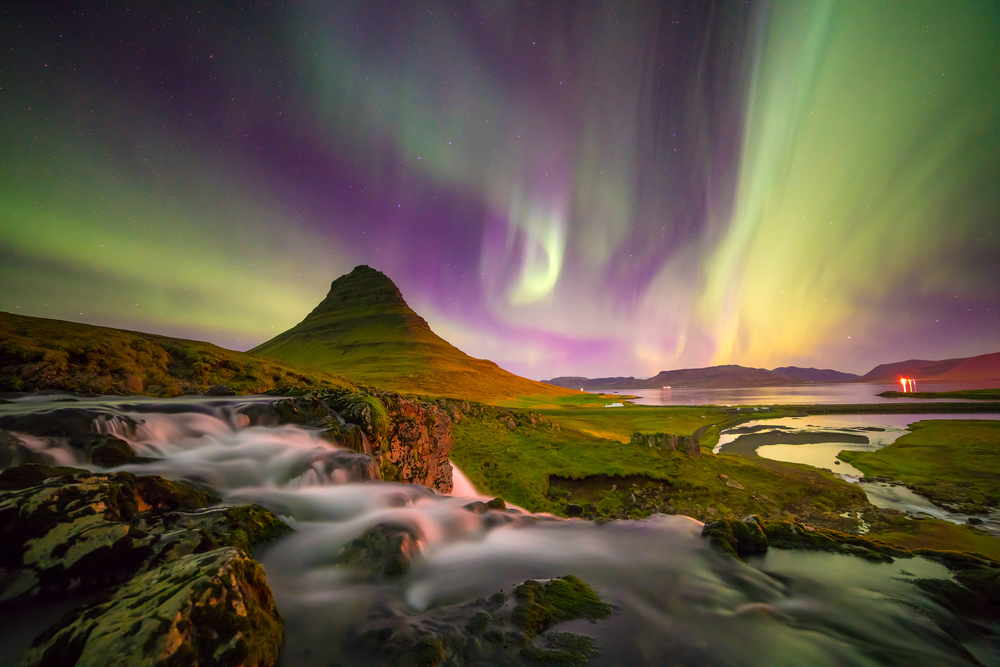
These Nordic cities offer more than mere sightseeing – they provide living laboratories where visitors can experience progressive urban planning, environmental sustainability, and social innovation firsthand. Their distinctive architectural heritage spans centuries while incorporating cutting-edge contemporary design, creating urban environments that honor tradition while embracing future possibilities.
The shared Nordic values of equality, functionality, and connection to nature manifest differently in each location, offering varied interpretations of similar cultural foundations. Whether visiting the familiar capitals or exploring lesser-known regional centers, travelers discover urban environments that prioritize human experience and environmental harmony – principles increasingly recognized as essential components of successful cities worldwide.
More from Travel Pug

- Cities Growing so Fast You Won’t Recognize Them in 10 Years
- 13 Destinations Where Tourists Regularly Regret Their Trip
- 16 U.S. Cities That Are Quietly Becoming Travel Hotspots
- Where to Travel If You Love Long Bus Rides and Daydreams
- 20 Cities Perfect for Solo Travelers Who Crave Adventure & Culture
Like Travel Pug’s content? Follow us on MSN.
